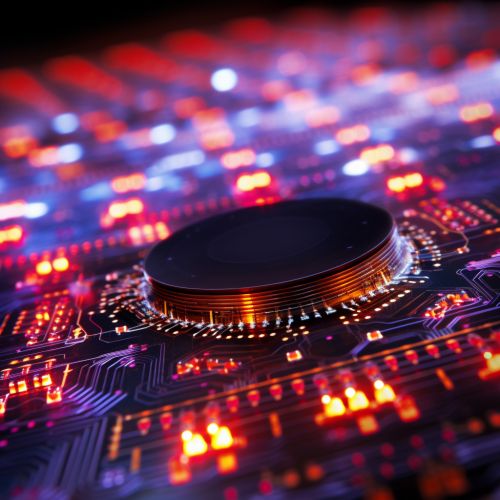Advances in Quantum Computing with Quantum Dots
Introduction
Quantum computing is a rapidly advancing field that leverages the principles of quantum mechanics to perform computations. One of the promising technologies in this field is the use of quantum dots to create quantum bits, or qubits, the fundamental units of quantum information. This article delves into the advances in quantum computing using quantum dots, discussing the principles, the technology, and the potential applications.


Quantum Computing
Quantum computing differs from classical computing in its ability to process vast amounts of data simultaneously. This is due to the quantum mechanical properties of superposition and entanglement. Superposition allows a quantum bit to exist in multiple states at once, while entanglement enables quantum bits to be interconnected such that the state of one can instantly affect the state of another, regardless of distance.
Quantum Dots
Quantum dots are nanoscale semiconductor particles that possess unique optical and electronic properties due to their size and quantum mechanical effects. These properties make quantum dots suitable for use in quantum computing. Quantum dots can be manipulated to create qubits, which can exist in a superposition of states, thereby enabling the parallel processing capabilities of quantum computers.
Quantum Dots in Quantum Computing
The use of quantum dots in quantum computing has been a significant focus of research in recent years. Quantum dots can be used to create a type of qubit known as a spin qubit. In a spin qubit, the quantum information is stored in the spin state of an electron in a quantum dot. The spin state can be manipulated using electric fields, which allows for the control necessary for quantum computation.
Advances in Quantum Dot Quantum Computing
There have been several key advances in the field of quantum dot quantum computing. These include the development of techniques for reliably creating and manipulating quantum dots, advances in the control and measurement of spin qubits, and the development of architectures for scalable quantum dot quantum computers.
Potential Applications
The potential applications of quantum dot quantum computing are vast. These include solving complex computational problems, enhancing machine learning algorithms, simulating quantum systems, and factoring large numbers for cryptography.
Challenges and Future Directions
Despite the advances, there are still many challenges to be overcome in quantum dot quantum computing. These include issues related to coherence times, error rates, and scalability. However, ongoing research and development efforts are aimed at addressing these challenges and pushing the boundaries of what is possible with quantum dot quantum computing.
